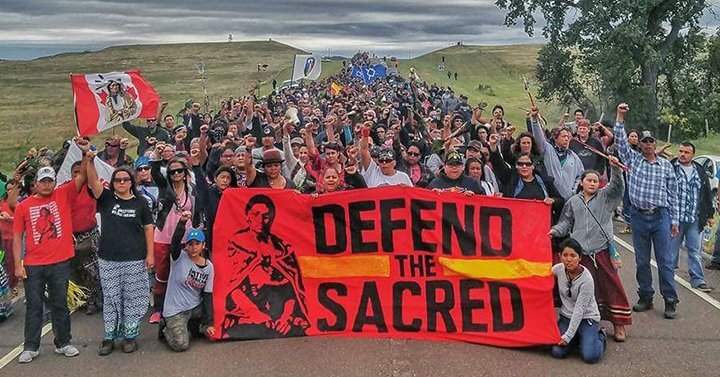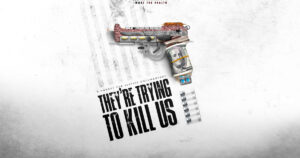I wasn’t sure if I should post a blog about Native American genocide on my website, but the more I thought about it, the more it made sense. I learned from Dr. Martin Luther King, Jr., that injustice anywhere is a threat to justice everywhere. So, when you consider the details of what amounts to genocide against Indigenous Peoples, it is actually a no-brainer to make the connections to our food system, and to try and help raise awareness. Many of the same forces such as capitalism and racism that drove the US government to commit such atrocities years ago, are unfortunately alive and well today. We are talking about the attempted elimination or poisoning of entire nations, cultures, histories, clean water, sustainable & healthy food, fertile lands, and our collective future. Wow. The water protectors of Standing Rock in North Dakota continue to inspire, and they are not afraid because of their ancestors, and history too. Native Americans are our brothers and sisters, and we must stand beside them.
I was struck by the many ways Indigenous Peoples remain far more intelligent and advanced than the European colonizers. One of my favorite examples was how many indigenous nations had treaties not just with other nations, but with nonhuman nations (animals), and the land as well. The future, and the past are indeed everything. “Our History is the Future” is a game changing book by historian Nick Estes on the history of Indigenous resistance in North America. The bottom line? I loved this book.
“They (Native Americans) incarnate the inconvenient truth that the US was founded on genocide and the continuing theft of a continent.” – Nick Estes, Our History Is the Future: Standing Rock Versus the Dakota Access Pipeline
Here are 15 takeaways that you may not have known:
1. It was genocide. The US government’s treatment of Native Americans constituted genocide. From poisoning their water, purposely infecting their people (via the fur trade), deliberately wiping out Indigenous people’s food sources (e.g., paying sharp shooters to dramatically reduce the numbers of buffalo from millions to only a few hundred), mass murdering entire communities of Native Americans time after time (estimates vary but it is likely that there were tens of millions of Native Americans in 1492, and that those numbers were reduced to roughly 300,000 by the early part of the 20th century), re-writing history and describing peaceful encampments of Indigenous people as militant when they were often made up of mostly women and children, breaking treaties and lying time after time, stealing millions of acres of land and requiring that Native Americans living on reservations assimilate and send their children to boarding schools that taught “Christian” values. Heck, even Abraham Lincoln signed off on 38 Native American resistors to be hanged (pennies had holes drilled in them in the ear portion to signify that Abraham Lincoln was not listening, and those who were hanged wore those pennies around their necks).
2. Women had/have tremendous political authority in many Indigenous nations
3. “Two Spirit” was a common term to describe people who were LGBTQ, or 3rd gender. These individuals played important roles, and were/are embraced within the community. I love that term.
4. Indigenous nations had treaties not just with other nations, but with nonhuman nations (animals), and the land.
5. Thanksgiving is a national day of mourning for Indigenous Peoples. Thanksgiving Day is a reminder of the genocide of millions of their people, the theft of their lands, and the relentless assault on their cultures.
6. The Pick-Sloan Plan authorized the Army Corps of Engineers and the Bureau of Reclamation to dam the main stem of the Missouri River. These dams specifically targeted and destroyed Native lives and lands in patent violation of treaties and without prior consent.
7. No matter who’s in charge, the current political system cannot save black lives. The same can be said for indigenous peoples, and the warming planet.
8. Zitcala-Sa was an Ihanktonwan writer, musician, and activist who made monumental contributions to Indigenous cultural renewal and was a forerunner of the “Red Power” movement. Despite her major accomplishments, she died poor and relatively unrecognized. She wrote a sarcastic play on the patriotic anthem “My Country, ‘Tis of Thee,” She changed the verse “Land where my fathers died / Land of the pilgrims’ pride / From ev’ry mountainside / Let freedom ring!” to “Land where OUR fathers died / Whose offspring are denied / The Franchise given wide / Hark, while I sing.” Zitkala Sa was remarkable and wrote the following as well: “Our Sioux People. In spite of all the efforts to segregate and differentiate the human family by color, and a sea of names,” she said, “at heart they are all the same.” It was the white man who with “his Bible under one arm and gun powder under the other” had excluded himself from any true claim to humanity. The Sioux had not been militarily defeated but “subdued by starvation,” forced to surrender lands “filled with the stench of putrefying carcass of buffalo herds wantonly killed by paid sharp shooters, [the] outcome of the white man’s broken promises to the Sioux weeping over little cold lifeless bodies in their weak arms, their little darlings dead from hunger and fever.” After relentless imperial expansion, “the Sioux were driven into smaller reservations, out of which they were never to go again without a pass—never again as free men.” Segregated by reservations, “the course of their evolution, determined by their own initiative, and according to their own philosophy, has been interrupted.”
9. Police, military, and private security firms engage in a global counterinsurgency against civilian populations that extends from Palestine to Baltimore, Ferguson, the US Mexico border, and now Standing Rock. The “war” is against Palestinian life, migrant life, and Native life. They use “Israeli crowd control methods” including “pain compliance” and “crowd control” strategies that include chemical weapons, rubber bullets, and bean bag rounds. These “non lethal weapons” are deployed against peaceful protestors and resulted in two people to lose their eyesight, and one woman to lose her arm at Standing Rock, while wounding and traumatizing countless others.
10. Ancestors of indigenous resistance didn’t fight merely against settler colonialism, they fought for indigenous life, and just relations with human and nonhuman relatives, and with the earth.
11. Our ancestors live on through us and in the stories we tell. We are never truly alone, and they are never truly gone. As the Dakota scholar Ella Deloria once wrote, “I am not afraid; I have relatives.”
12. The theft of indigenous lands is a part of global imperialism. The spirit of internationalism was apparent at Standing Rock in 2016 as a parade of indigenous nations showed up in solidarity.
13. The Oceti Sakowen’s struggle for its land is not about reparations, apologies or reconciliation. It is about justice, and ending the settler-colonial system. Unfortunately, many settlers cannot imagine the return of lands, or for that matter, a future peaceful co-existence of the more than 500 distinct indigenous nations.
14. Modern Oceti Sakowin internationalism, for instance, traces its origins to the early twentieth century, an era generally viewed as a low point for Indigenous activism and resistance. In North America alone, an estimated pre colonial population of tens of millions of Indigenous peoples had been reduced to about 300,000, and for Flathead historian D’Arcy McNickle, writing in 1949, two processes contributed greatly to this decimation: the institution of private property and the destruction of Indigenous governance that once held land in common. Indigenous nations at the time also possessed little in the way of either collective property or political power, as Indigenous territory had been drastically diminished, and the reservation system had overthrown or almost entirely dissolved customary governments.
15. Physical extermination and the repression of Indigenous political power verified the United States’ genocidal intent, but these had not accomplished their purpose. It was imagined that natives disappeared into the wilderness of history, were never truly nations, and had been overpowered by a superior civilization. If they were nations, they were eclipsed and replaced by the real nation—the United States. Such erasure notwithstanding, vibrant Indigenous political traditions persisted. But to the untrained eye, nothing was awry. From the severed stump began to regrow the tree of life—the tree of resistance that would blossom into revolt decades later.
*The Water protectors also ask us: What does water want from us? What does the earth want from us? Mni Wiconi—water is life—exists outside the logic of capitalism. For the earth to live, capitalism must die. Hecetu welo!
Excerpts From: Nick Estes. “Our History Is the Future.”
Howard Zinn: “If you don’t know history it is as if you were born yesterday. And if you were born yesterday, anybody up there in a position of power can tell you anything, and you have no way of checking up on it.”




